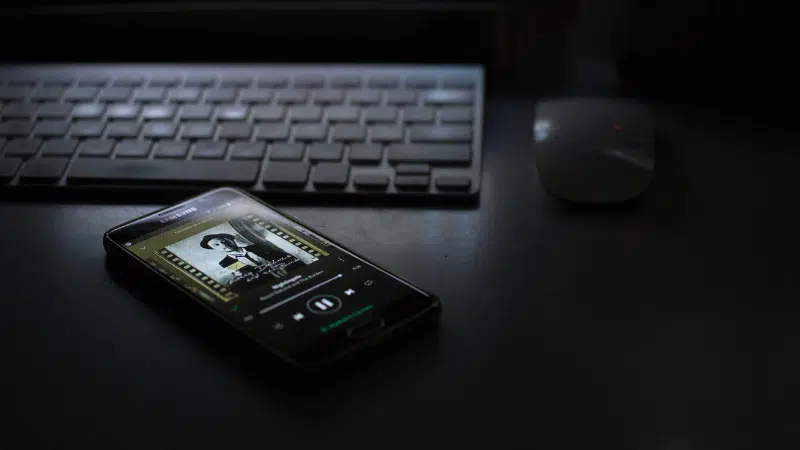You’re probably familiar with Spotify as the top music streaming service in the game, but did you know that Spotify is also becoming the top advertising platform for musicians? With over 286 million monthly active users and growing every year, that’s HUGE. As an artist, you don’t want to miss out on this opportunity. Luckily, we’re here to give you everything you need to know before you start advertising on Spotify. Here’s the rundown…
The Artist Checklist to Advertising on Spotify
Spotify’s ad format has proven itself to be more engaging and successful than traditional display ads. With an average of 4,000-10,000 ads being seen every day, audio is steadily climbing the charts. Audio ads drive an 81% lift in ad recall and 26% lift in brand awareness versus traditional display ads.
Although this is amazing and holds great promise for ticket sales and better fan engagement, don’t get ahead of yourself. There are a few things you need to know before launching your first Spotify ad campaign.
Getting To Know Spotify Ad Studio
The foundation for building your campaign starts with Spotify Ad Studio. This tool is where you’ll build and manage your ad campaigns for your releases and/or events. Spotify’s platform makes it easy for anyone to create and manage audio ads.
Ad Studio gives you the ability to:
- Create audio ads on the platform
- Reach unpaid Spotify users (these are users who haven’t subscribed monthly to the service, ~135m users)
- Target users based on demographics, interests, mood, music preference & platform type
- Target specific artist’s fans (only if you are an approved advertiser that is clearly promoting the artist(s) or an event that they are performing in your ad)
- Forecast impression estimates
- Retarget users that have engaged with your previous ads
- Create sequential messaging to tell a story about your brand
- Track campaign results
- Track metrics for the listeners of your ad, as well as streams generated by your ad
Disclaimer: Sadly, Spotify doesn’t allow the upload or import of CRM data or the creation of custom audiences. You also can’t reach paid Spotify users via campaigns created in Spotify Ad Studio. We’re limited to only a few metrics when it comes to campaign reporting, so we currently can’t track sales/conversions, ROI, CPC or CPA.
Interest Targeting
Interest targeting allows you to reach relevant audiences based on the activities and topics they’re passionate about. Interest categories are informed by users’ recent streaming behavior, including their podcast, playlist and platform preferences.
You can also select multiple interest categories to expand your potential audience. This includes people things like books, comedy, business, fitness, gaming, and so much more.
Demographic Targeting
In order to avoid spending marketing dollars on unnecessary placements and users that will not convert, it is best to ensure that you know your target audience. Your Spotify audience data is a great tool for helping you better understand the best audience for your ad campaign.
Spotify’s Ad Studio allows the following demographic targeting:
- Location (country, state, region, and sometimes DMA)
- Age
- Gender
- Language
When solidifying your audience, consider what you know about your fans. Are you noticing trends in the age range or gender in your ticketing data? Are you noticing more streams from a particular country or city? If you’re lacking previous data to build on, insights from social media as well as tools like Chartmetric, can help provide you more insight into your audience.
Content Targeting
In addition to demographic targeting, we have the ability to reach users on Spotify based on their moods, activities, music tastes and artist affinities. Does your audience spit bars with the latest in hip-hop? Are they into banging their heads to the latest rock tunes? Or do they like to workout to the hottest EDM? These are all great questions to ask when exploring opportunities for getting the most out of your ad dollars.
Spotify’s content targeting is divided into three categories:
Playlist Targeting
Playlist Targeting enables you to target users based on their recent playlist that Spotify categorizes based on moods & activities such as workout, travel, party, and chill.
Genre Targeting
Gene Targeting allows you to select multiple genres to expand your potential audience and reach users that have listened to those specific genres.
Fan Targeting
Fan Targeting permits approved advertisers* to target fans of a particular artist that they are promoting. Spotify identifies fans of artists by their recent listening behavior, playlist adds as well as their follows.
*You can only use Fan Targeting when you’re an approved advertiser for an artist. Your ad must clearly promote the artist OR an event the artist is performing at.
For the best results, it is recommended that you only use one method of content targeting as too many options will narrow your audience as you can only reach Spotify users who match ALL the criteria.
——
To learn more, check out:
Organic YouTube Marketing Basics for Musicians
How Spotify Ad Studio Works and Why You Should Use It
Get Real-Time Stats with the Spotify for Artists App Update
——
Timing & Platform Targeting
Ad Studio allows you to choose the timing and platform that best fits your campaign message and your audience.
Though the timing is optional, it’s best to know when your audience is most likely to engage with your content and serve your message at those times. (However, it’s not a bad idea to serve your ad(s) at all hours as Spotify fans are engaged 24 hours a day.)
Platform targeting allows you to serve your ad to particular devices and operating systems depending on what best suits your targeted audience. Consider taking a dive into your website or social media analytics to see which devices and operating systems are popular. If you don’t have access to this data, stick to targeting all platforms until you do. With platform targeting, you can choose to target desktop, mobile or both as well as iOS, Android, or both.
Create a Lasting Impression With Your Assets
When creating your ad creative (audio & imagery) it’s best practice to stick to the guidelines set by Spotify. Your audio file must be 15-30 seconds in length, and your graphic must be 640 x 640 or a 1:1 ratio. You can review the full Spotify ad specifications here.
Voiceover
In Spotify Ad Studio, you can either upload your own audio or create a script and provide it to Spotify and they will send you a voiceover file for your approval.
Creative
The visual asset typically serves as a backup to the voiceover as a majority of the time Spotify users are not looking at their phone or screen when listening, that is why it is best to make your audio as compelling as possible. Though do not get it twisted, a powerful display asset is the next step from your audio ad to an ad conversion.
Stick to the rules
Do not forget to adhere to Spotify’s Advertising Policy to make sure your ad gets approved. The last thing you need is a nip slip or drug reference preventing your ad approval.
Budget, Budget, Budget
What’s your budget? This is the age-old question, isn’t it? Before you get ahead of yourself, make sure you note that Spotify has a minimum ad spend of $250 (USD). However, Spotify only charges your card at the end of each campaign. You’re only billed each time the ad is shown, which means your total spend could be less than the allocated budget.
Gauging Your Campaign Performance – Key Performance Indicators (KPIs)
As with any campaign, you want to be able to determine the success of your ads, but before you’re able to outline your KPIs, it is best to understand what metrics Ad Studio makes available to you.
Metrics currently available in Ad Studio:
- Total number of ads served
- Total number of clicks
- Click-through rate (CTR)
- Reach (total number of unique people who listened to your ad)
- Frequency (total number of times each person heard your ad)
You can review these KPIs in your Ad Studio summary for each campaign, along with the targeting, start/end dates, and original budget.
In Conclusion…
With all this, you should have all of the information you need to get started with Spotify Ad Studio and launch your own ad campaign for your latest release or upcoming tour! However, if all this seems a bit foreign to you or you simply do not have the time to do all this yourself, don’t fret. We’re always here to help.
You got this.



One Comment
Comments are closed.